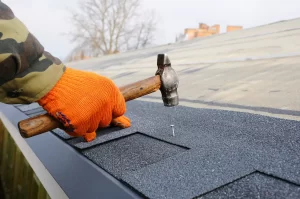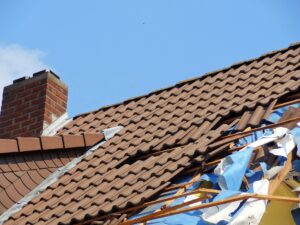Roof Leak Damage Repair: A Comprehensive Guide
A leaking roof is more than just an inconvenience—it can lead to significant structural damage, mold growth, and expensive repairs if not addressed promptly. In this guide, we’ll walk you through the causes of roof leaks, how to identify them, and the steps to repair and prevent future leaks.
Common Causes of Roof Leaks
Understanding the causes of roof leaks can help in both prevention and early detection. Some of the most common reasons include:
 Damaged or missing shingles – Harsh weather conditions like storms, wind, and hail can damage or dislodge shingles, exposing your roof to water penetration.
Damaged or missing shingles – Harsh weather conditions like storms, wind, and hail can damage or dislodge shingles, exposing your roof to water penetration.
Clogged gutters – If gutters are clogged with debris, water can back up and seep under roofing materials.
Flashing damage – Flashing around chimneys, vents, and skylights can deteriorate over time, allowing water to enter.
Cracked vent booting – The rubber boots around vent pipes can crack due to aging or extreme weather.
Condensation in the attic – Poor ventilation can lead to moisture buildup, which eventually causes leaks and mold.
Identifying a Roof Leak
Detecting a leak early can save you from expensive repairs. Here are some signs to watch for:
Water stains on ceilings or walls
Dripping water or moisture in the attic
Mold or mildew growth
Curling, buckling, or missing shingles
Peeling paint or damaged drywall
How to Repair a Roof Leak
If you’ve identified a leak, follow these steps to fix it before it worsens:
- Find the Source
Start by inspecting your attic for signs of moisture or stains. Follow the water trail to determine where it’s entering. Sometimes, the entry point is far from where the water is appearing inside your home.
- Patch Small Holes and Cracks
For minor leaks, use roofing sealant or caulk to patch small holes around vents, flashing, or shingles.
- Replace Damaged Shingles
If shingles are cracked or missing, carefully remove the damaged ones and replace them with new shingles, securing them with roofing nails and sealant.
- Repair or Replace Flashing
Damaged flashing should be replaced or sealed with roofing cement to prevent further leaks.
- Clean Gutters and Downspouts
Remove debris from gutters and ensure downspouts are directing water away from the foundation.
Preventing Future Roof Leaks
To avoid dealing with leaks in the future, take these proactive steps:
 Regular Inspections – Check your roof at least twice a year and after major storms.
Regular Inspections – Check your roof at least twice a year and after major storms.
Maintain Gutters – Keep gutters clear of leaves and debris to allow proper water drainage.
Ensure Proper Ventilation – Prevent attic condensation by ensuring adequate ventilation and insulation.
Trim Overhanging Branches – Trees near your roof can drop debris or damage shingles during storms.
Schedule Professional Roof Maintenance – Hiring a roofing expert for periodic inspections can help catch potential issues before they become costly problems.
When to Call a Professional
While minor leaks can often be fixed with DIY methods, some situations require professional intervention. If the leak is extensive, the roof structure appears compromised, or if you’re unable to locate the source of the leak, contact a licensed roofing contractor for a thorough inspection and repair.
Addressing roof leaks promptly is essential to protecting your home and avoiding costly repairs. Regular maintenance and timely repairs can extend the lifespan of your roof and keep your home safe from water damage. If you suspect a leak, don’t wait—take action today to safeguard your investment.
